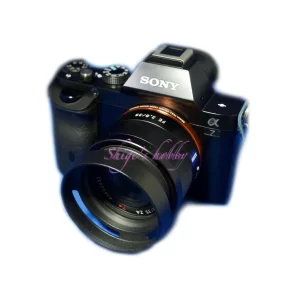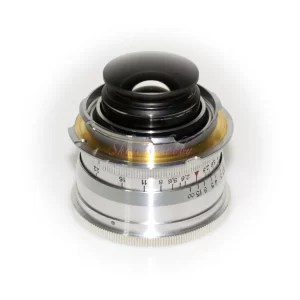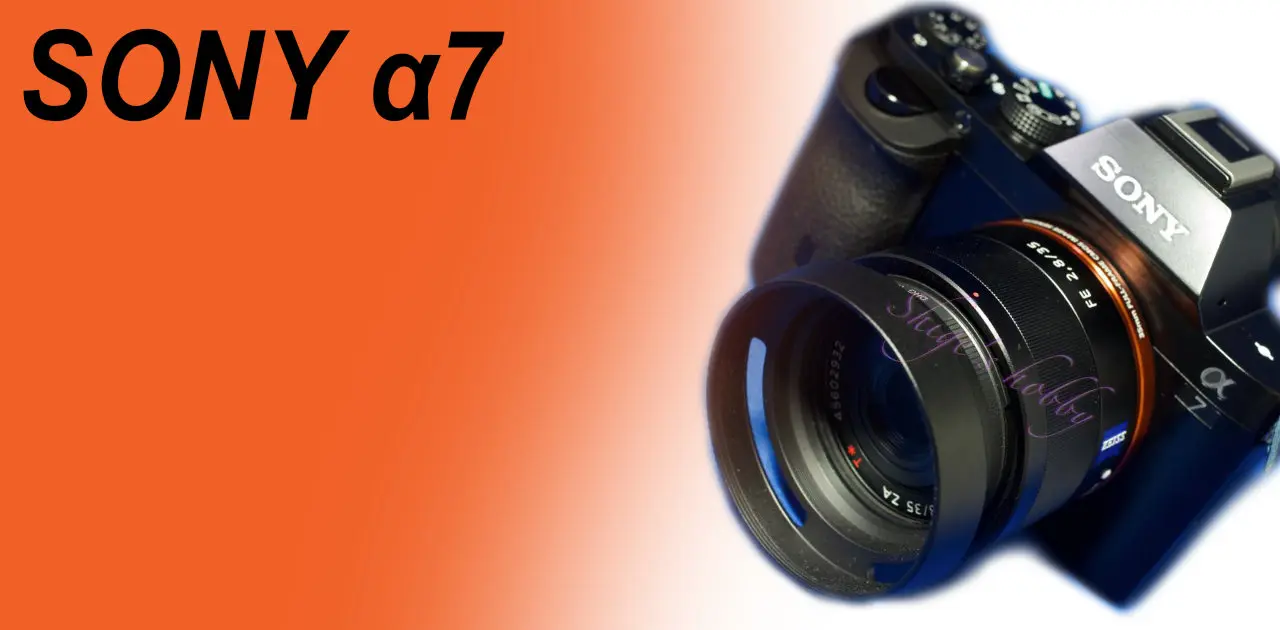Last updated on 2025-08-30
A review and Photo Examples of the SONY α7(ILCE-7)
- Please see the disclaimer regarding advertising here.
- Italicized links in the text are advertisement links that take you to other sites.
Table of contents

Gallery
The following lenses were used to take the example photos:
- SONY FE SONNAR 35mm ZA
- SONY FE SONNAR 55mm ZA
- SONY VARIO TESSAR FE24-70mm ZA
Review

1.Overview
The SONY α7 is a 35mm full-frame mirrorless camera released in 2013.
Key specifications are listed below, with details on the specifications page.
- 35mm full-frame (full-frame) 24-megapixel sensor
- 2.36 million-dot electronic viewfinder
- Tilt-type rear LCD, 3-inch, 920,000 dots
- AF is contrast detection only
- Recording media: SD cards up to SDXC compatible, and a Memory Stick Duo/PRO compatible slot
- Battery: FW-NP50 (7.2V, 1020mAh, 7.3Wh)
2.Usability
The SONY α7 is a monumental model, marking Sony’s switch from APS-C to 35mm full-frame sensors in its mirrorless cameras. I bought it mainly to play around with mount adapters for the full-frame sensor.
With a 24-megapixel sensor and a 2.36-megapixel EVF, it has all the necessary and sufficient specs for a mirrorless camera, and is still usable in 2024.
It is inferior to the latest α series in two ways: it does not use on-chip phase detection autofocus, and it does not have in-body image stabilization.
Design-wise, the angular design at the top of the body, where the EVF is located on the optical axis, is unbalanced with the rounded shape of the bottom of the body, and I’m not really used to it. Design-wise, the α NEX and α6000 series have sleeker body designs, which I prefer.
Compared to the successor α series, there is one less custom button, and the shutter button and main switch were previously located on the top of the grip, so the successor model has a cleaner top of the grip and is easier to use.
The mount is the same as the APS-C E-mount, but all mount adapters can be used as is, except for those that include a light shield to cut out excess light for APS-C size sensors. Some adapters also allow users to remove the light shield themselves.
Because it is equipped with a 35mm full-frame sensor, there is more space inside the mount, making it possible to attach lenses with rear lenses that move closer to the sensor. The α7 can also be used with the Russian-made Jupiter-12, which, on cameras with APS-C size sensors, has lenses that interfere with the wall in front of the sensor.

In addition to using the mount adapter, I also used standard FE lenses, including the FE 35mm ZA, FE 55mm ZA, and FE 24-70 ZA. When using FE lenses, the autofocus (AF) wasn’t particularly accurate and focused slowly. An adapter for A-mount cameras was also released, but I didn’t purchase it due to its many limitations.
The thing that bothered me most about using the camera was the loud, metal-on-metal shutter noise, reminiscent of a guillotine. Because of the shutter noise of the α7, I avoided full-frame E-mount cameras that came after it.
I continued to use the FW-NP50 battery (7.2V, 1020mAh, 7.3Wh) from my APS-C camera. Compared to the successor NP-FZ100 (7.2V, 2,280mAh, 16.4Wh), the battery capacity is smaller, and due to the high self-discharge rate typical of Sony lithium-ion batteries, the battery quickly empties after a short period of inactivity. This is a weakness that hasn’t changed since I used the α NEX-5 in the past.
I’m also using the updated FW-NP50 battery in parallel with the old battery, but I’ve been using it without any gaps between uses so far, so I don’t know how much of an improvement there has been in self-discharge.
3.Summary
In conclusion , to sum up, the Sony α7 is a well-made camera for the first mirrorless camera with a 35mm full-frame sensor. It’s compatible with most Leica M-mount lenses, allows for reliable focusing using the electronic viewfinder, and makes using non-genuine lenses a lot of fun.
However, it does have two weaknesses: a noisy shutter sound and a short battery life.
Specification
The model changes of the α7 series were mainly mechanical improvements while maintaining the sensor pixel count. The second generation was equipped with image stabilization and phase detection AF, the third generation adopted a large capacity battery, and the fourth generation adopted a high-resolution EVF and increased the pixel count to 33 million pixels. It is basically positioned as an entry-level model.
The α7R series is a high-pixel camera in the α7 series, and there is no big difference in price between the α7 series and the α7R series, and the α7R series is selling better. However, it is gradually becoming difficult to differentiate between the α7R and α7, so it is thought that the products will be integrated in one or two generations.
The name α7 given to the first full-frame mirrorless camera reminds me of the α-7 from the Minolta era. The number 7 from the Minolta era was given to amateur high-end cameras slightly above the popular price range, and the α7R could have been called the α7 and the α7 the α5.
It’s a minor point, but the Minolta α-7 has a “-” between the α and 7, while the Sony version does not have a “-” between the α and 7. When writing product names in writing, you need to be careful because there may be minor points of criticism. If the manufacturer itself has no particular preference and the spelling is inconsistent, it can be difficult to write an article.
| Model name | α7 | α7II | α7III | α7IV |
| Model number | ILCE-7 | ILCE-7M2 | ILCE-7M3 | ILCE-7M4 |
| effective pixel count | 24.2 million pixels | 24.2 million pixels | 24.2 million pixels | 33 million pixels |
| Sensor size | 35mm fuill-size 35.6 x 23.8mm | 35mm fuill-size 35.6 x 23.8mm | 35mm fuill-size 35.6 x 23.8mm | 35mm fuill-size 35.6 x 23.8mm |
| Back LCD | 3.0 0.92 million dots | 3.0 1.23 million dots | 3.0 0.92 million dots | 3.0 1.04 million dots |
| EVF | Built-in 2.36 million dots | Built-in 2.36 million dots | Built-in 2.36 million dots | Built-in 3.69 million dots |
| Max Shutter speed | 1/8000 | 1/8000 | 1/8000 | 1/8000 |
| Electric shutter | ○ | ○ | ○ | ○ |
| Image Stabilization | × | ○ | ○ | ○ |
| Battery | NP-FW50 | ← | NP-FZ100 | ← |
| Touck panel | × | ← | ○ | ← |
| Multi / Micro USB | ○ | ← | ← | ← |
| USB Type-C | × | ← | ○ 3.1Gen1 | ← 3.2/PD |
| WIFI | ○ | ← | ← | ← |
| NFC | ○ | ← | ← | × |
| Bluetooth | × | ← | ← | ○ |
| AF | Contrast detection method | Phase difference detection method Contrast detection method | ← | ← |
| Recorded Media | MS-Pro SDXC | ← | ← | ← |
| Release date | 2013.11.15 | 2014.12.5 | 2018.3.23 | 2021.12.17 |
| Size(mm) | 127 x 94 x 55 | 127 x 96 x 60 | 127 x 96 x 74 | 131 x 96 x 80 |
| Weight (Only body) | 416 | 556 | 565 | 573 |
| Color | Black | ← | ← | ← |
Options
- HVL-F20M (Flash)
- HVL-F28RM (Flash)
- HVL-F46RM (Flash)
- LA series mount adapter
- accessory kit
- strap
- Case
Reference links
- SONY A7 official page
- SONY A7 compatible accessories
- SONY VARIO TESSAR E 24-70mm F4
- SONY SONNAR E 35mm
- SONY SONNAR E 55mm
- SONY NEX-5 review page・Shige’s hobby
- SONY NEX-6 review page・Shige’s hobby
- SONY NEX-7 review page・Shige’s hobby
Affiliate Link
Update history
- 2025.8.22
- 2024.12.31
- 2024.04.12:First draft


Be First to Comment